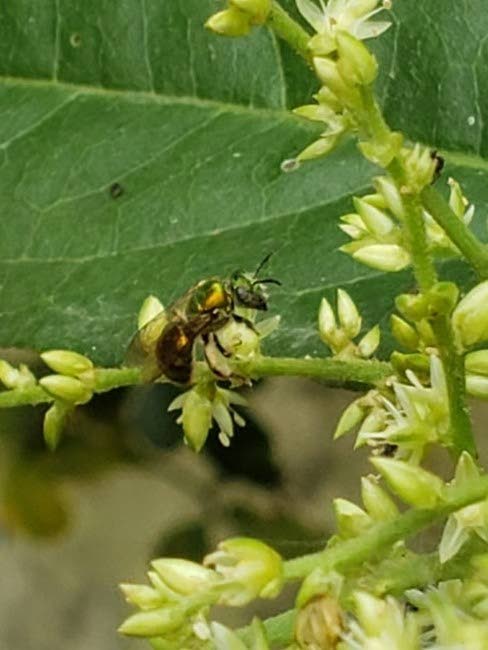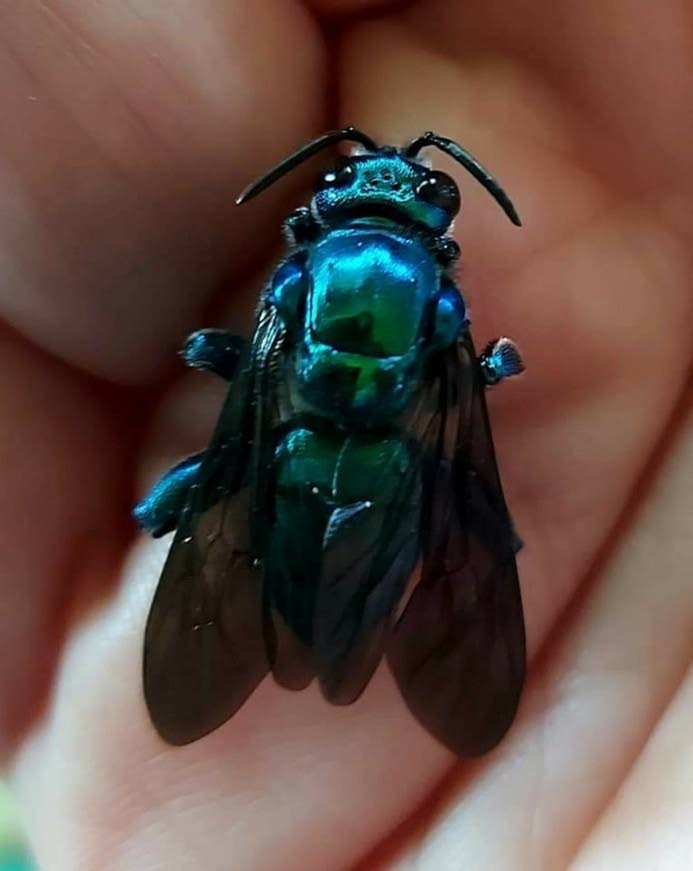Protecting native bees

The BES-Net TT project advocates for conservation of the local or native bee species. A key reason is that these bees are important pollinators (arguably more effective than exotic, honeybees) and hence important to food production and plant reproduction. Yet, their habitats and their populations are being destroyed during land clearance, logging and through simple ignorance of their importance.
As another World Bee Day, May 20, and International Day for Biological Diversity on May 22, the project narrows its focus on native bees and ways to protect them, BES-Net TT said in a media release.

Getting familiar with native bees
The question is often posed: how will I know what a native bee looks like?
This is one of the main issues that threaten the existence of these native bees (and other beneficial organisms) – a lack of knowledge. Although, bees are not large, or charismatic they are, however, visually unique, colourful and beautiful in their own right.
These very important pollinators, local VIPs, are working hard in the field to bring food to your table. But where are they found? Many of the local bees nest in a variety of locations. For example, the stingless bees, which belong to the tribe Meliponini nest in cavities found in the branches and stems of living trees, dead logs, bamboo stalks, and even abandoned ant hills. Locally a nest was found in an overturned concrete sink, and other locations include cavities in panel doors and in broken bricks in walls. They indeed occupy a range of microhabitats, BES-Net TT said.
Bee activity
Native bees are active collecting materials they need to thrive: the nectar of flowers provides an energy source; pollen is collected and used as a source of protein; water is collected to cool their hives and their own bodies; plant resin, twigs and other plant materials are collected for hive construction. The term busy as a bee is well applied to these organisms.
Among native bees are both solitary forms and those that live in colonies, like honeybees. All the stingless ones live in colonies. Exploring the natural environment for native bees is usually the first step in finding their nests/hives in the wild.

Helping bees
The BES-Net TT project promotes the Pollinators and Pests of Trinidad and Tobago research project on the iNaturalist platform. Here, anyone can upload a photograph of an unknown organism to get the assistance of online experts around the world in identifying the specimen. This is encouraged to help document local bees and their locations, and locations of their hives which we need to protect.
When native beehives are located, if there is a need to relocate them to a safer place, this can be done with the help of trained experts. Wild hives can be boxed, creating a new habitat which mimics the natural one, by having a structure with an entryway, brood chamber, storage section for hive products, and open areas to receive materials collected by the worker bees. Boxed hives need to be properly managed and can eventually be split into more colonies when the time is right.
Boxed hives are very useful additions to farms, as the foraging and feeding activities of bees provide ample opportunities to facilitate effective pollination of crops. It is a matter of helping the bees that can eventually help you. Why not get familiar with native bees and build a mutually beneficial man-and-biodiversity community?
For more info: e-mail besnet.tt@gmail.com or visit HERE, Facebook or Instagram.


Comments
"Protecting native bees"